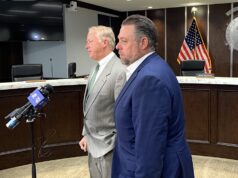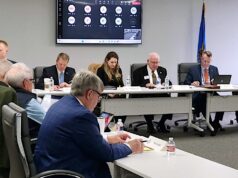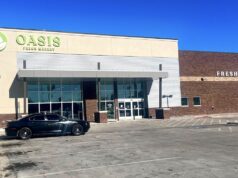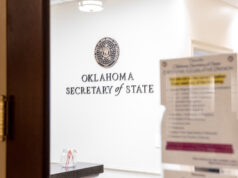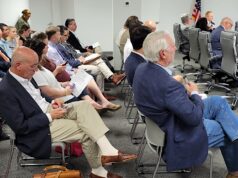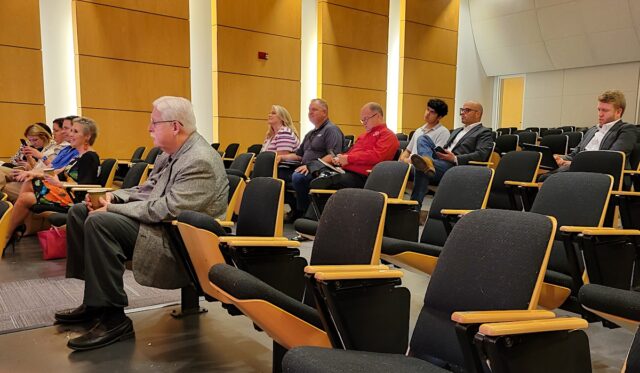
The Oklahoma Broadband Office, which is poised to disburse as much as $1.6 billion to internet service providers to establish high-speed internet for underserved areas of Oklahoma, seems to be moving from a dial-up pace to one more closely fitting to its name.
Work to create an updated broadband service map for the state should be completed in August, about the same time the OBO plans to award proposals to internet service providers who submitted plans last year to provide service to areas of the state with no or poor levels of high-seed internet service.
Similarly, work on OBO’s five-year plan should be completed in November, said Edyn Rolls, the agency’s director of broadband strategy.
Data show more than one-in-five Oklahoma residents — about 830,000 people — lack access to dependable high-speed internet.
The Legislature has allocated about $382 million of federal American Rescue Plan Act money to the OBO to fund various projects across the state.
Bids came in totaling more than 10 times the amount of the available ARPA funds. The OBO received 133 broadband requests for about $4.3 billion worth of proposed projects. Those requests are being reviewed by a committee of the agency’s Broadband Governing Board.
In addition, the OBO is anticipating it will administer another $1.2 billion in other federal grant funds, with the goal of providing high-speed internet service to the vast majority of Oklahomans by June 2028, at which point the Oklahoma Broadband Office will be closed.
OBO executive director Mike Sanders said his office has been told it should know by the end of June how much money it will ultimately receive to allocate from the Broadband Equity Access and Deployment program. Funds from other federal agencies will be made known later in the year.
Internet service providers will be asked to submit proposals for those funds. The BEAD funds and other grants, such as those from the Digital Equity Act, have different criteria than the ARPA money, which has to be spent by Dec. 31, 2026.
“The good thing is if they don’t get the ARPA money, they can reapply for the BEAD money and the DEA money,” Sanders said. “We’ll know more as the summer goes on how much those pots are going to have.”
Rolls said those considered to be unserved are those who have internet service with a download speed of less than 25 megabits per second (Mbps) and an upload speed of less than 3 Mbps. Residents are considered underserved if their internet service has a download speed of less than 100 Mbps and an upload speed of less than 20 Mbps.
A good download speed is at least 100Mbps, and a good upload speed is at least 10 Mbps, according to HighSpeedInternet.com. With 100Mbps, you can easily watch Netflix or YouTube, attend Zoom meetings and play most online games on several devices at the same time.
Sanders said the goal is to get internet service throughout the state at a download speed of at least 100 Mbps and an upload speed of also at least 100 Mbps.
With such a massive undertaking and a project that will receive about $1.6 billion of federal funds, competition is intense among internet service providers of all sizes. Travis Greer, director of the professional services division for AirWave Broadband in Ralston, showed up at the May 9 meeting of the Oklahoma Broadband Governing Board requesting that smaller companies and communities of 200 people or less are not overlooked.
“Rural is our top priority,” said Oklahoma Broadband Governing Board Chairman Mike Fina after that meeting.
Sanders, a former state representative from Kingfisher, agreed.
“The need is unserved and underserved, and most of those areas are in rural areas,” Sanders said. “Our charge is to take care of the unserved and underserved. (…) There are doughnuts. There are pockets here in suburban or even urban areas that have doughnut holes — as I like to call them — that don’t have it, but the vast majority are in the rural areas.”
The OBO office is developing a map showing the availability and speeds of broadband services across the state, which will be helpful in determining where work to upgrade services should take place. Residents who want to examine their internet service options can check out a Federal Communications Commission map posted on the OBO’s website.
The OBO was created in HB 3363, which was enacted last year. Its nine-member governing board is responsible for broadband expansion policy and overseeing the broadband office.
Most of the time this past year has been dedicated to setting up the office and hiring an executive director, which was pushed back nearly a month in March when the OBO’s governing board reconsidered an earlier choice and instead hired Sanders, who started his duties with the OBO last month.
Oklahoma City meeting attracts no regular internet customers
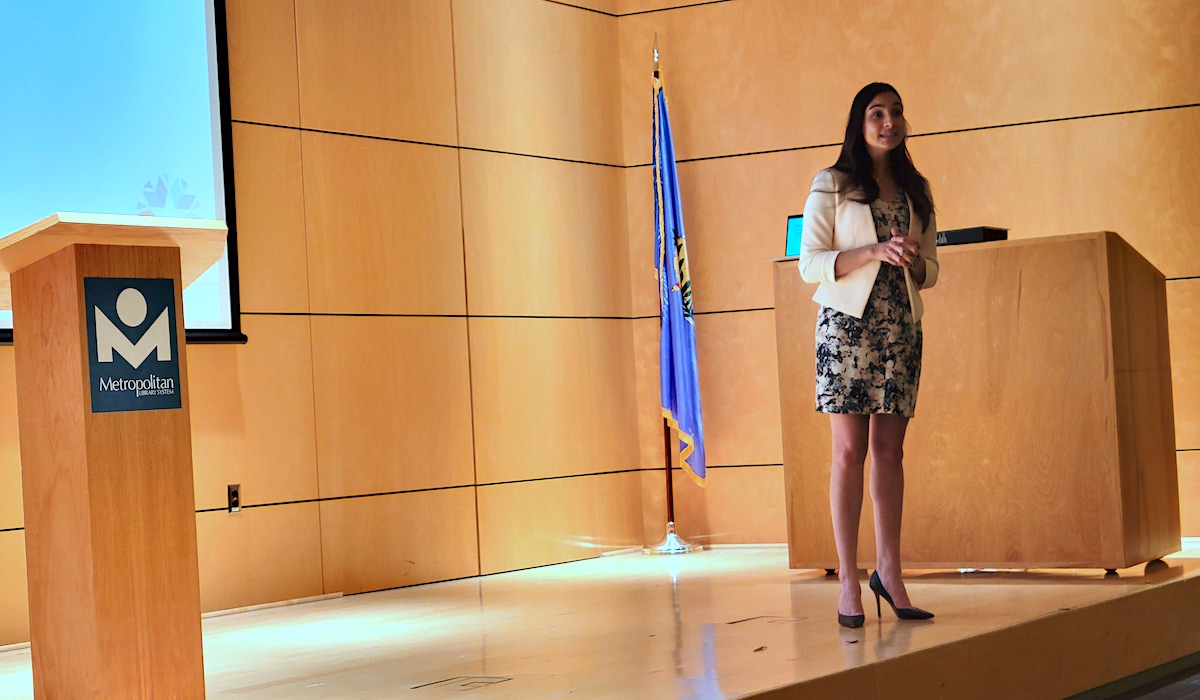
Earlier this month, the Oklahoma Broadband Office began holding meetings across the state to tell residents about its plans and to hear comments from people in those communities.
About 50 people turned out for Monday’s meeting at the Ronald J. Norick Downtown Library in Oklahoma City. Most said they were professionally connected with internet service providers or a government agency. Others identified with a nonprofit organization or a school. None were there simply as internet customers or residents without internet service. Several at the meeting said it might have been difficult for citizens to attend because of the day and time, the hassle of finding a parking space downtown, or people being unaware of the meeting.
Those attending said they wanted a clear, transparent process to ensure funds are used to accomplish OBO’s goal of providing internet services to the unserved and underserved in the state.
They also said rural areas have been left out in the past, emphasizing that those living in rural communities deserve reliable, high-speed internet service.
Jabar Shumate, vice president of community convening and social justice with the Urban League of Greater Oklahoma City, said the OBO should keep in mind that residents in urban areas also lack high-speed internet services, especially in under-resourced communities.
“We want to make sure they don’t get left out,” he said. “Especially in under-resourced communities, you have to have a trusted partner, folks that can engage individuals that they trust to get them appropriate information in order to explore some of the challenges they have.”
Should Oklahoma Broadband Office reopen bidding process?
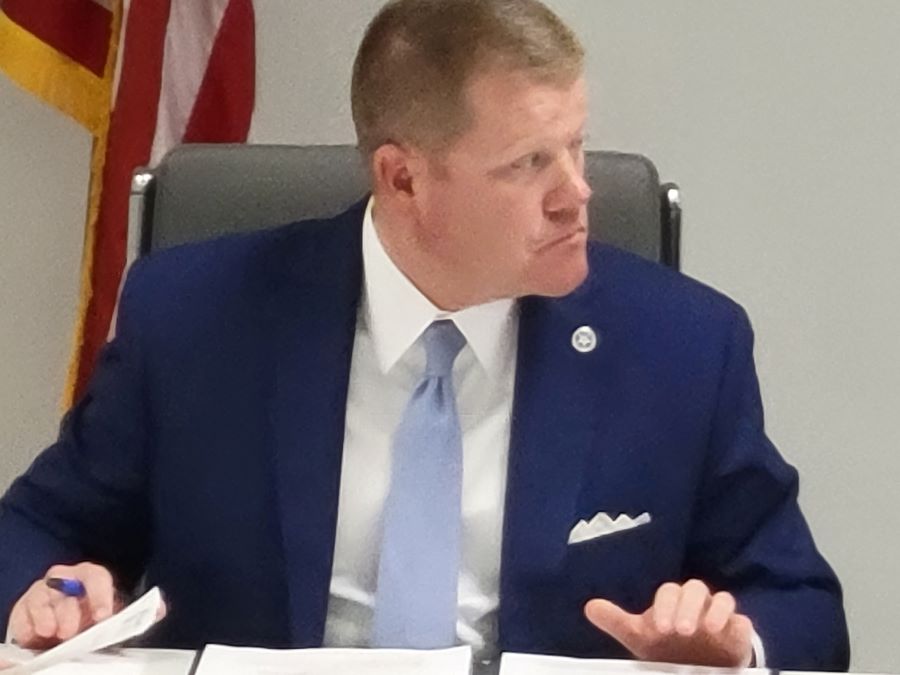
Shumate, a former state senator, said he was disappointed about the lack of progress made by OBO in the past year, but he said he has been encouraged since Sanders, with whom he served in the Legislature for several years, has come on board as the agency’s executive director.
“It’s taken a while for the state to get visible and moving,” Shumate said. “I’m really optimistic with the new director. I know of his work from the Legislature, so I’m very optimistic now seeing the rollout of the office, the plan.”
Gus Sanchez, a senior government account executive with T-Mobile who manages the state of Oklahoma, said the OBO should reopen the bidding process for the ARPA funds, saying technological advances have occurred making such services as 5G wireless more practical and more cost-efficient. Building infrastructure and installing lines underground will be expensive. It’s been estimated it would cost about $120,000 per mile to lay fiber in the granite found in many areas of southeast Oklahoma.
“When this plan was put together, 5G hadn’t matured,” Sanchez said. “If the goal is to deliver as quickly as possible to the citizens, there are better ways and more cost-effective ways.”
Asked about the possibility of reopening the process to seek proposals, Sanders expressed hesitation.
“When you open it up, then what happens is those who had played by the rules and got it in by the time they were asked, that puts us in a very precarious situation,” Sanders said. “I would have hoped that some of the folks that were interested should have done it when we asked them to do it.”
The OBO is going through an exhaustive scoring metrics and challenge process on the proposals, he said.
“All of those have to be done right,” Sanders said. “We’re going to make sure that’s done right before one thing is announced.”
During the OKC community meeting, unavailable service and internet service being too expensive were the two highest reasons given why people do not subscribe to home internet service in their communities.
Rolls, the OBO’s director of broadband strategy, reminded those in attendance about the federal government’s Affordable Connectivity Program. Eligible households can receive up to a $30-per-month discount toward internet service. Those living on qualified tribal lands can get a discount up to a 75 per month. Eligible households can also receive a one-time discount of up to $100 to purchase a laptop, desktop computer or tablet from participating providers if they contribute more than $10 and less than $50 toward the purchase price.
A household is eligible for the Affordable Connectivity Program if a member of the household has an income that is at or below 200 percent of the federal poverty guidelines, participates in certain assistance programs, such as SNAP, Medicaid, Federal Public Housing Assistance, SSI, WIC, or Lifeline, or participates in tribal-specific programs, such as Bureau of Indian Affairs General Assistance, Tribal TANF, or the Food Distribution Program on Indian Reservations.
The OBO is scheduled to continue its sessions across the state through next month.
Residents are encouraged to register at oklahoma.gov/broadband/outreach for any of the remaining stops, which are all set for a 4:30 p.m. start time:
- May 26 — Chickasha
- June 2 — Altus
- June 6 — Sallisaw
- June 8 — Sulphur
- June 9 — Lawton
- June 13 — Ada
- June 20 — Okmulgee
- June 22 — Goodwell
- June 23 — Woodward
Residents, business owners, farmers and ranchers, leaders, members of tribal communities, and representatives for schools, hospitals, nonprofits and other community organizations are encouraged to attend the events.










